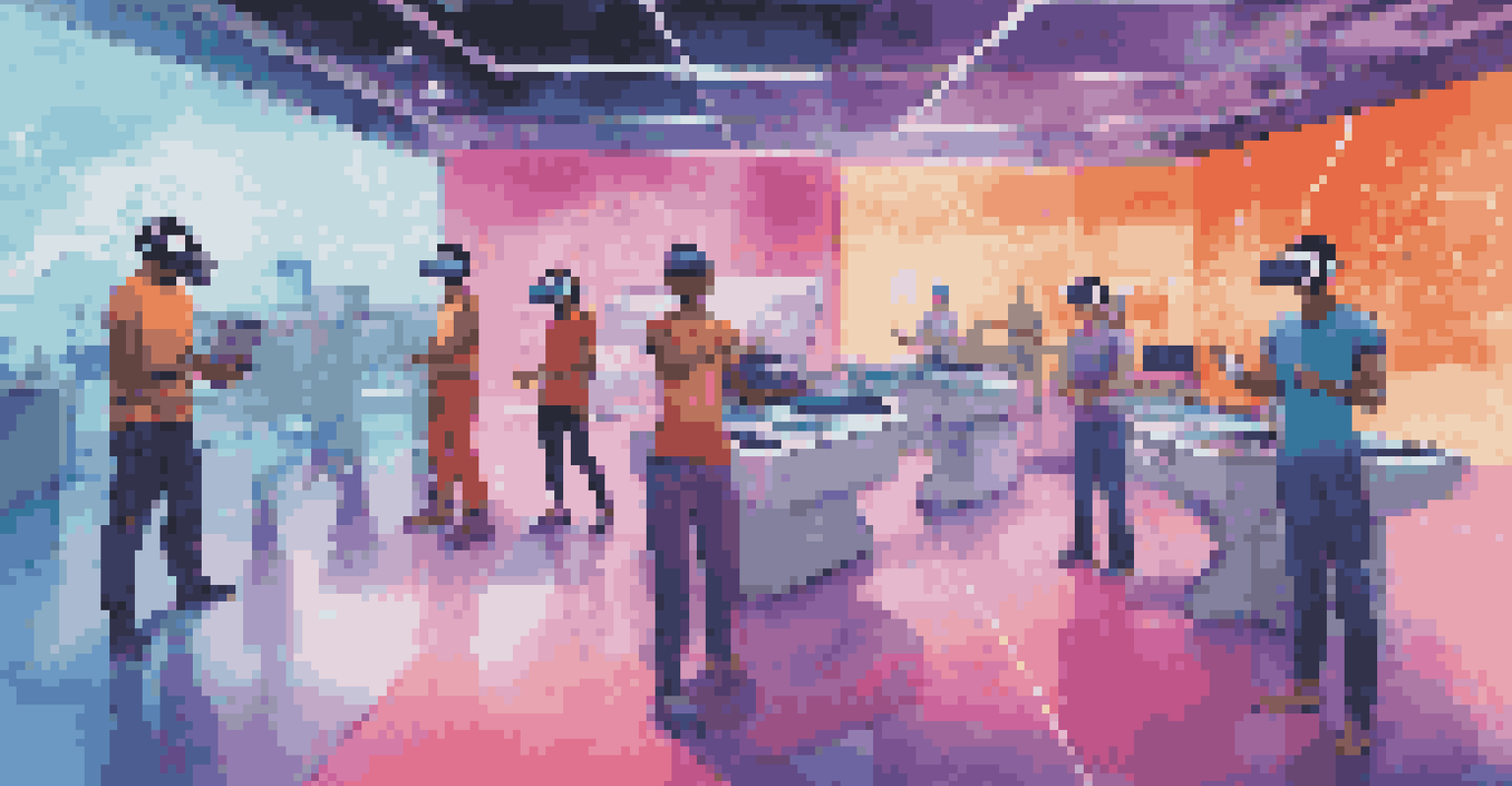Utilizing Gamification in Employee Training Programs

Understanding Gamification and Its Benefits
Gamification refers to the application of game-like elements in non-game contexts, like employee training. By integrating features such as points, badges, and leaderboards, organizations can create a more engaging learning environment. This approach not only boosts motivation but also enhances retention of information, making learning feel less like a chore and more like a fun challenge.
Games provide a structure for achievement, which is vital for motivation in learning environments.
Incorporating gamification helps to break down complex training material into smaller, manageable goals. This creates a sense of achievement as employees progress, fostering a culture of continuous learning. Additionally, it appeals to various learning styles, ensuring that all employees can benefit from the training provided.
Ultimately, the goal of gamification in training is to improve participation rates and overall performance. When employees are engaged, they are more likely to absorb and apply what they've learned, leading to a more skilled and confident workforce.
Key Elements of Gamification in Training
There are several key elements that make gamification effective in training programs. First, incorporating a point system motivates employees to complete tasks and encourages friendly competition among peers. This not only makes the learning process enjoyable but also instills a sense of accomplishment as employees accumulate points.

Another important element is the use of badges and rewards. These tangible recognitions serve as milestones in an employee's learning journey, encouraging them to strive for excellence. When employees see their progress visually represented, it can significantly enhance their commitment to the training process.
Gamification Boosts Learning Engagement
Integrating game-like elements in training creates a more engaging environment, enhancing motivation and information retention.
Lastly, creating a leaderboard can foster a sense of community and teamwork. By publicly showcasing top performers, organizations can encourage collaboration and healthy competition, driving employees to support one another while striving for personal success.
Designing Engaging Gamified Training Programs
When designing a gamified training program, it's essential to align the game mechanics with the learning objectives. Start by identifying the key skills employees need to develop and determine how gamification can support those goals. This ensures that the training remains relevant and focused, maximizing its effectiveness.
The greatest reward for doing is the opportunity to do more.
Next, consider the target audience. Different teams may have varying preferences and motivations, so tailor the gamification elements accordingly. For example, younger employees may respond well to technology-driven gamification, while others might prefer a more traditional approach with physical rewards.
Finally, regularly gather feedback from participants. This allows for continuous improvement of the training program and ensures that it remains engaging and effective over time. By involving employees in the process, organizations can create a sense of ownership and commitment to their learning.
Measuring Success in Gamified Training
To truly understand the impact of gamification in training, measuring success is crucial. Start by establishing clear metrics before launching the program, such as completion rates, knowledge retention, and employee satisfaction. These benchmarks will help in evaluating how well the gamified elements are resonating with participants.
In addition to quantitative measures, qualitative feedback plays a vital role. Conduct surveys or focus groups to gather insights on employee experiences and perceptions of the gamified training. This feedback can highlight areas for improvement and guide future iterations of the program.
Key Elements Drive Training Success
Point systems, badges, and leaderboards foster motivation and a sense of achievement among employees during their learning journey.
Lastly, consider tracking long-term outcomes, such as performance improvements on the job or employee engagement levels. By analyzing these results, organizations can better understand the return on investment for their gamified training initiatives.
Overcoming Challenges in Gamification Implementation
While gamification has numerous benefits, implementing it can come with challenges. One common obstacle is the initial resistance from employees who may view it as childish or unprofessional. To combat this, it's essential to communicate the purpose and advantages of gamification clearly, ensuring that employees see it as a tool for their growth.
Another challenge can be the potential for unhealthy competition among employees. While a little competition can be motivating, too much can lead to stress and anxiety. Organizations should foster a supportive environment where collaboration is encouraged, balancing competition with teamwork.
Lastly, it's vital to ensure that gamification does not overshadow the actual learning objectives. The focus should always remain on skill development and knowledge acquisition, not just accumulating points or badges. Keeping the training aligned with business goals is key to successful gamification.
Real-World Examples of Gamification in Training
Many companies have successfully implemented gamification in their training programs, showcasing its effectiveness. For instance, Deloitte used a game-based approach in their leadership training, resulting in a 40% increase in engagement and a significant boost in knowledge retention. This demonstrates how gamification can transform learning experiences into engaging activities.
Another notable example is Starbucks, which developed a gamified training app for their baristas. This app not only helped employees learn about coffee and customer service but also encouraged friendly competition among staff members. As a result, employee performance improved, leading to a more knowledgeable and enthusiastic workforce.
Future Innovations Enhance Gamification
Advancements in VR, AR, and AI will personalize and deepen the gamified training experience, leading to improved employee performance.
These real-world examples highlight that when gamification is thoughtfully integrated into training, it can lead to impressive outcomes. Organizations that embrace this approach can foster a more motivated and skilled workforce, ready to tackle challenges head-on.
The Future of Gamification in Employee Training
As technology continues to evolve, so too will the landscape of gamification in employee training. With advancements in virtual reality (VR) and augmented reality (AR), organizations can create immersive training experiences that truly engage employees. Imagine a scenario where employees can practice skills in a simulated environment, making learning both effective and enjoyable.
Moreover, the integration of artificial intelligence (AI) can personalize the training experience further. AI can analyze employee performance and adapt the training modules to suit individual learning paces and styles, making gamification more tailored and effective. This level of customization can drive even greater engagement and retention.

In conclusion, the future of gamification in employee training looks promising, with endless possibilities for enhancing learning experiences. Organizations that stay ahead of the curve and embrace these innovations will likely see significant benefits in employee performance and satisfaction.